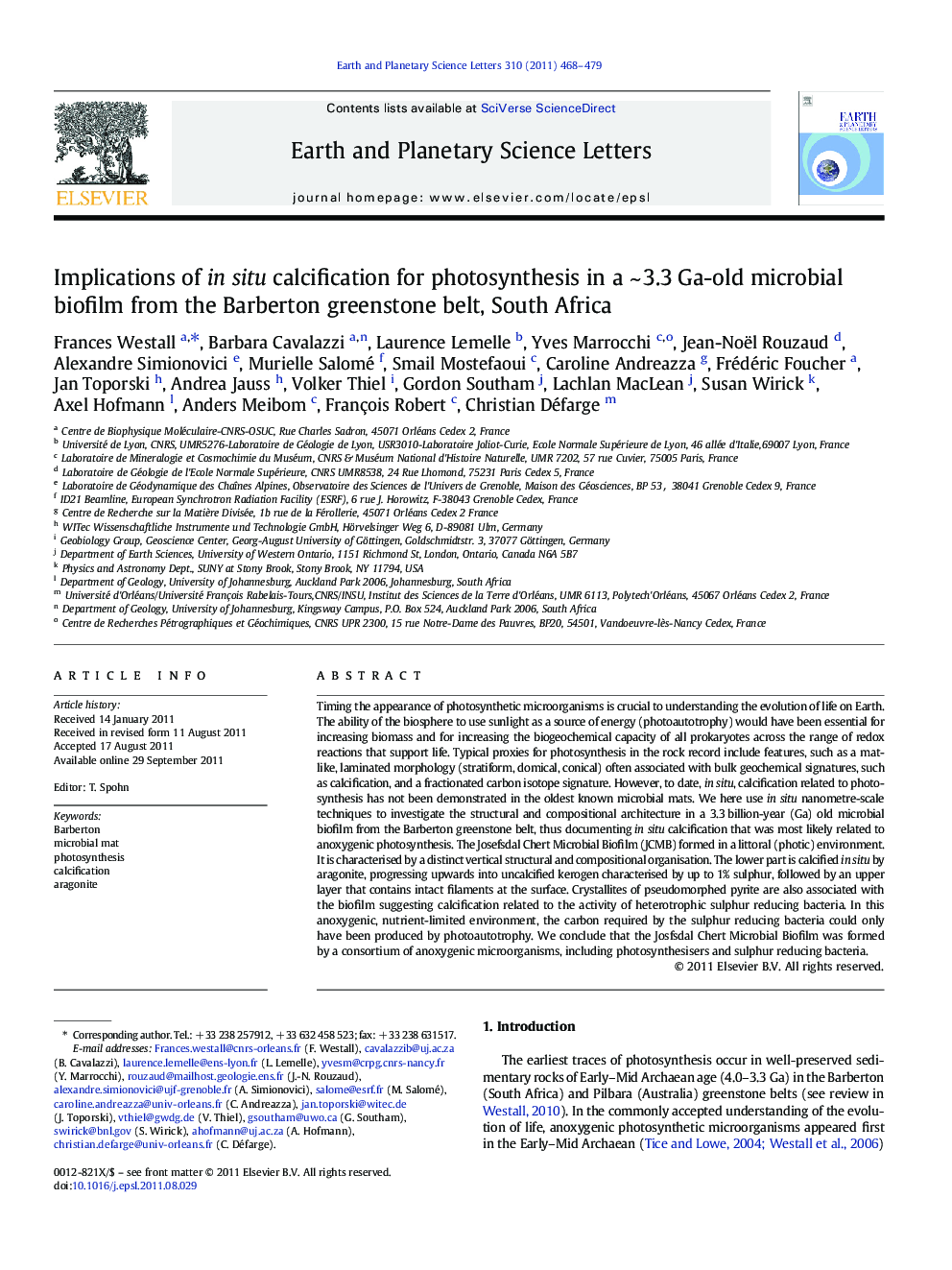| کد مقاله | کد نشریه | سال انتشار | مقاله انگلیسی | نسخه تمام متن |
|---|---|---|---|---|
| 4677760 | 1634819 | 2011 | 12 صفحه PDF | دانلود رایگان |

Timing the appearance of photosynthetic microorganisms is crucial to understanding the evolution of life on Earth. The ability of the biosphere to use sunlight as a source of energy (photoautotrophy) would have been essential for increasing biomass and for increasing the biogeochemical capacity of all prokaryotes across the range of redox reactions that support life. Typical proxies for photosynthesis in the rock record include features, such as a mat-like, laminated morphology (stratiform, domical, conical) often associated with bulk geochemical signatures, such as calcification, and a fractionated carbon isotope signature. However, to date, in situ, calcification related to photosynthesis has not been demonstrated in the oldest known microbial mats. We here use in situ nanometre-scale techniques to investigate the structural and compositional architecture in a 3.3 billion-year (Ga) old microbial biofilm from the Barberton greenstone belt, thus documenting in situ calcification that was most likely related to anoxygenic photosynthesis. The Josefsdal Chert Microbial Biofilm (JCMB) formed in a littoral (photic) environment. It is characterised by a distinct vertical structural and compositional organisation. The lower part is calcified in situ by aragonite, progressing upwards into uncalcified kerogen characterised by up to 1% sulphur, followed by an upper layer that contains intact filaments at the surface. Crystallites of pseudomorphed pyrite are also associated with the biofilm suggesting calcification related to the activity of heterotrophic sulphur reducing bacteria. In this anoxygenic, nutrient-limited environment, the carbon required by the sulphur reducing bacteria could only have been produced by photoautotrophy. We conclude that the Josfsdal Chert Microbial Biofilm was formed by a consortium of anoxygenic microorganisms, including photosynthesisers and sulphur reducing bacteria.
► In situ calcification (aragonite) of a 3.3 Ga photosynthetic microbial biofilm.
► Calcification related to sulphur reducing bacteria activity.
► Oldest known occurrence of aragonite.
Journal: Earth and Planetary Science Letters - Volume 310, Issues 3–4, 15 October 2011, Pages 468–479